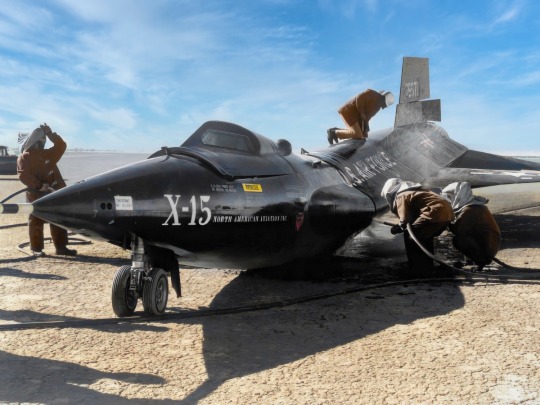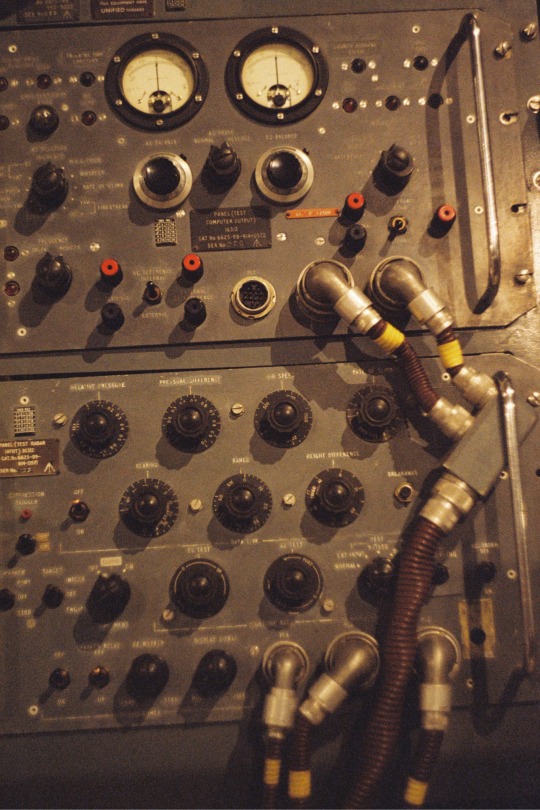#aviation programs
Explore tagged Tumblr posts
Text
Certified BBA in Airline Operation Hospitality in Kolkata

Discover your wings with a Certified BBA in Airline Operation Hospitality!
Elevate your career in the aviation industry by mastering airport operations, passenger service, and hospitality management. For the sky-high opportunities with Airway India, the premier college in Kolkata for the Best BBA in Airline Operation Hospitality Management. Enroll now! Soar to new heights and be ready to fly high in the world of aviation with the expert training and industry connections provided by Airway India. Your dream career awaits! For more quires visit their website at www.airwayindia.in
Phone no- +91 86970 38522
Email- [email protected]
#aviation programs#aviation college#aviation management#aviation industry#bba in hospital management#bba in aviation#airlines#airhostess programs#cabin crew
3 notes
·
View notes
Text
Unlocking Your Aviation Dreams with Top Aviation Flight Schools

Are you ready to take your passion for flying to new heights? Choosing the right aviation flight school is the first step toward a rewarding career in the skies. Whether you’re dreaming of piloting a commercial jet or mastering the art of private aviation, finding the perfect flight school is crucial to achieving your goals.
Why Attend an Aviation Flight School?
Aviation flight schools provide structured training programs tailored to equip aspiring pilots with essential skills and knowledge. These institutions blend classroom instruction with hands-on experience, offering students a solid foundation in aerodynamics, navigation, and flight safety. Advanced flight simulators and modern aircraft ensure you’re ready for real-world scenarios.
At a reputable school like Aviator Flight, you’ll benefit from certified instructors, cutting-edge facilities, and personalized guidance to fast-track your aviation journey.
What to Look for in an Aviation Flight School
Before enrolling, consider these factors:
Accreditation: Ensure the school meets industry standards and is recognized by aviation authorities.
Instructor Expertise: Qualified, experienced instructors are key to effective training.
Training Equipment: Access to modern aircraft and simulators enhances your learning experience.
Flexible Programs: Look for schools offering courses that align with your schedule and career goals.
The Role of Technology in Training
Technology is transforming aviation education. Flight simulators allow students to practice maneuvers and emergency procedures in a risk-free environment. Additionally, online resources provide the flexibility to study theory at your own pace, complementing hands-on training.
Take Off with Aviator Flight
Aviator Flight stands out as a premier aviation flight school, dedicated to helping students achieve their dreams. With a reputation for excellence, we provide world-class training programs designed to meet global aviation standards.
Are you ready to take flight? Start your aviation journey today with Aviator Flight and soar toward a bright future!
#Pilot training#Aviation career#Flight schools near me#Learn to fly#Commercial pilot license#Private pilot training#Aircraft pilot education#Aviation programs#Professional flight training#Flight simulator training#AviationFlightSchools#LearnToFly#PilotTraining#AviationCareer#FlightSchool#FlyingDreams#PilotLife#FlightTraining#AviationJourney#SoarWithAviator
1 note
·
View note
Text

Cryotank Fuel Cells on the Apollo 1 Service Module (SM-012) at North American's Downey facility in California.
Date: August 7, 1966
SDASM Archives: Casson_0084
#Apollo 1#AS-204#Apollo CSM Block I#CSM-012#NASA#Apollo Program#C-type Mission#Cancelled#Cancelled Mission#Construction#North American Aviation#Factory#Downey#California#August#1966#my post
113 notes
·
View notes
Text



#faa#federal aviation administration#federal program purge#christofascists#trump regime#musk coup#doge coup
17 notes
·
View notes
Text

20 Feb. 1962: John Glenn relaxes aboard the USS Noa after being recovered from the Atlantic near Grand Turk Island after his historic Mercury flight. Glenn became the first American to orbit Earth in his "Friendship 7" capsule. The Noa picked him up 21 minutes after splashdown.
23 notes
·
View notes
Text


X-15 rocket aircraft. "The Right Stuff". From Pearl Harbor to test pilot, to the Apollo program. A rare interview with Scott Crossfield
VIDEO ➤➤https://youtu.be/x5ALRclpguQ
#youtube#aircraft#airplane#aviation#documentary#military#dronescapes#hyper sonic#hypersonic#X15#North American Aviation#x 15#X-15#Rocket Aircraft#Supersonic#Test Program#Engineering#NASA#NACA#test pilot#Crossfield#accident#apollo program
55 notes
·
View notes
Text





Presenting the all-new Locke 'Hede' Martín B-22 Stupid: a promising evolution of the "bomber" concept, intended to save the taxpayer (that's you!) money! This ingenious aircraft avoids costly maintenance and expensive ordinance by using its own engine as an expendable projectile! Mike Sparks approved! Top USAF brass have already ordered thousands! Get your own today!
11 notes
·
View notes
Note
hi!! very excited about your next batch! but i was wondering if you ever think of posting some of the (wonderful) female!mav scenes you wrote (the question mark on my computer decided to stop working but this is indeed a question)
have a great weekend!!
yeah sure! again— this isn’t finished and never will be finished, I posted the reasons below. But here are a bunch of snippets from the fem!mav/lesbian charliemav AU from this summer. Would love to hear your thoughts, because politically it gave me some pause! lol.
1. On how mav survives (the central motif of the one-shot is Mav cutting her hair with scissors which is why the emphasis here)


2. On ice (straight icemav will never work because fundamentally ice is a misogynistic cunt)

3. on sex with girly girls (one of life’s greatest pleasures)


ehhh you get the picture of what’s under the cut
4. on charliemav


5. on charlie

7. The end (post Layton mission [mav proving herself by saving ice’s life] and the end of TG86, Mav gearing up to cut her hair again in Charlie’s house)


and here, copy-pasted, were the tags i planned to affix to the charliemav one-shot, which I think explain also why I stopped writing it—maverick is insanely out of character here!
“some discussion of issues that would affect a female pilot in the 1980s in this one: SA, sexism, etc. u have been warned / i would love to talk to anyone about the politics of this one cause hoo boy i had to think about it / it��s a little personal to me too / i wouldn’t necessarily say i struggle with my gender identity but i do have a really complicated relationship with it / i think this mav is incredibly out of character / it turns out mav’s thoughtless overperformance of masculinity is so ingrained into his character that / if you make it intentional he/she turns into an entirely different character. / i often struggle with writing maverick way way too bitter (there’s something very gentle about tgm mav I struggle replicating) / & this is a VERY bitter & cynical & calculating mav as well. she has to be. But i fear i lose some of mav’s original character in the cynicism. 🤷🏽♀️ / that’s why i struggle writing AUs—you lose so much of the original characters who are DEFINED by the stories they’re from / if that makes sense. / i think a female maverick isn’t maverick. / you might as well be writing original fiction at that point. / this 1 shot is pretty much just original fiction. / idk would love to hear ppls thoughts on the fandom philosophy behind AUs / something i would love to think about more / top gun fanfiction / charlotte charlie Blackwood / pete maverick mitchell / Tom iceman kazansky/ nick goose bradshaw / genderbent top gun / charliemav / in this universe mav and Charlie break up and mav gets back together with Penny according to the tgm timeline btw / TGM mav might as well be a lesbian like nothing really has to change in the script at all. / post 2010 tom cruise just gives lesbian. no change necessary / soundtrack for this one is ‘I have a woman inside my soul’ by yoko ono”
I also stopped writing this one because I could not for the life of me figure out how to write goose, canonically a sexist just like mav and ice. made things difficult and a little awkward
#pete maverick mitchell#tom iceman kazansky#charlotte charlie blackwood#top gun#asks#oh boy lesbian charliemav though. whoa. 🥰#would’ve been great if I could’ve pulled it off 🥲#basically the plot of this one was maverick dealing first & foremost with her femininity#she’s not trans BUT she hates womanhood. if that makes sense. because womanhood makes people discount her#as a pilot in the manly manly naval aviator program.#her womanhood functions the same as ‘fatherly dishonor’ in the original movie. makes people discount her/him as a pilot.#so she toxically replicates the behaviors of the men around her to make her less attractive to them and less of a target#but then with the Layton mission she proves herself#and actually bests iceman (who is super butthurt about it bc woman beat him but they maintain respect)#and Charlie encourages mav to start growing her hair out etc. engaging more with her femininity now she’s proven herself.#politically a little weird!#not butch by choice i guess? which felt anachronistic if that makes sense#but fun nonetheless#charliemav#I have never seen GI Jane but this seems a lot like that based on my limited knowledge of it tbh#think i relate to mav too much in this one.#I’d like to be taken seriously as a Writer not a woman writer. so i write about men to be taken seriously as a Writer not as a woman writer#feels a lot like mav in this one
46 notes
·
View notes
Text




The museum also has a neat exhibit on astronaut food! The exhibit includes examples of foods from the Mercury, Gemini, Apollo and Skylab programs. The cost of food decreased as the space program went on: cost per astronaut per day was about $300 during the Gemini program, $150 during the Apollo program, and $75 during the Skylab program. The food also got more palatable, too.
#original post#National Museum of the United States Air Force#United States Air Force Museum#aviation history#Space#NASA#Space Program#astronaut food
4 notes
·
View notes
Text

#photography#my photos#film#retro tech#control panel#aviation#aircraft#ferranti ai.23 radar#radar#canon ae 1 program#helios 44 2#helios 44-2
5 notes
·
View notes
Text
today in kerbal space program i made a plane that is very similar to the mig-21


the nose cone (pointy bit in the middle of the air intake) actually moves forward and backward with the throttle which is pretty cool imo

3 notes
·
View notes
Text


Tuesday, October 10, 2023
Today, I helped with a school group. There were about 60 fifth graders. I took half the group and talked about inventing, documentation, and the Aerial Experiment Association while our director of education took the other half and talked about inventions and innovations that Glenn Curtiss made. We switched groups then all came back together to design, build, and fly poster board airplanes. I think the kids had fun.
3 notes
·
View notes
Text

#aircraft#aviation#space shuttle#space#outer space#raumfahrt#scifi#tech#retro tech#aesthetic#science#astronomy#cinematic#space program#aeronautical#buran
2 notes
·
View notes
Text




The Apollo 1 Command Module (CM-012) being loaded up into the Aero Space lines Pregnant Guppy, bound for the Kennedy Space Center, Florida.
Date: August 24, 1966
SDASM Archives: Casson_0002, Casson_0004, Casson_0007, Casson_0008
#Apollo 1#AS-204#Apollo CSM Block I#CSM-012#NASA#Apollo Program#C-type Mission#Cancelled#Aero Spacelines Pregnant Guppy#B-377-SG#SGT Pregnant Guppy#Pregnant Guppy#North American Aviation#Factory#Downey#California#August#1966#batman 1966
70 notes
·
View notes
Text
Preparing for the DGCA Exams? Find the Best Navigation Classes in Delhi
If you want to be a commercial pilot in India, preparing for the DGCA (Directorate General of Civil Aviation) exams is essential. A key topic in these exams is navigation, which tests your ability to manage a plane’s flight path. Choosing the right commercial pilot training in India is key to your success. Here’s how to prepare for the DGCA exams by selecting the right navigation classes in…
#atpl dgca classes in india#atpl dgca ground classes in india#atpl ground classes in delhi#atpl ground classes in india#aviation training institute in delhi#best aviation academy in delhi#best aviation academy in india#best aviation training in delhi#best commercial pilot training institute in india#best cpl ground classes in india#best ground classes for cpl in india#best pilot training academy in delhi#best pilot training institute in delhi#best pilot training institute in india#best pilot training school in delhi#cadet pilot program in india#commercial pilot training in delhi#cpl ground classes in delhi#dgca atpl classes in delhi#dgca cpl pilot classes in delhi#dgca ground classes in india#dgca navigation classes delhi#flight training institute in india#navigation classes in delhi#pilot training academy in delhi
0 notes
Text
Frankfinn : Your Gateway to a Successful Career in Aviation and Hospitality
Frankfinn Institute of Air Hostess Training in Dubai is a premier institution offering specialized courses in aviation, hospitality, travel, and customer service. With a focus on comprehensive skill development, Frankfinn prepares students for successful careers in these dynamic industries.
Key Courses Offered: Frankfinn Certificate Course in Aviation, Hospitality, Travel, and Customer Service (FCCAHTCS): A 4-month program covering essential aspects of the aviation and hospitality sectors. Frankfinn Certificate Course in Aviation & Grooming (FCCAG): A 2-month course emphasizing personal grooming and aviation industry standards. Frankfinn Certificate Course in Travel Management (FCCTM): A 2-month program focusing on the intricacies of travel management.
Why Choose Frankfinn Dubai: Global Recognition: Frankfinn has a strong international presence, with training centers in Dubai and a reputation for excellence in aviation and hospitality training. Industry Awards: The institute has received multiple accolades, including the Gold Award for Best Higher Vocational Institute for Skill Development. Placement Opportunities: Frankfinn boasts a commendable placement record, with students securing positions in leading airlines and hospitality companies.
By enrolling at Frankfinn Dubai, students gain access to quality education and training, paving the way for a successful career in the aviation and hospitality industries.
Explore more at http://www.frankfinn.ae/
Mobile : +971-5-59935622 Email : [email protected]
#Aviation Training Programs#Hospitality Management Courses#Cabin Crew Certification#Air Hostess Training Institute
0 notes